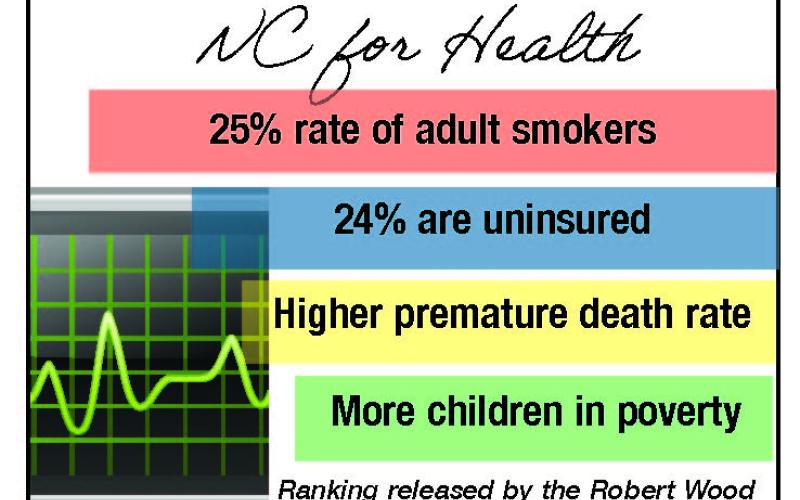Larry Griffin
lgriffin@thesmokymountaintimes.com
With its 96th place ranking on the state’s County Health Rankings, Swain County may have reason to worry.
The ranking is released annually by the Robert Wood Johnson Foundation and looks into a stew of things including personal health decisions, policies and statistics to assess how healthy every individual county in the country is.
Swain has seen some better days, the study says – it’s been #96 out of 100 counties for both of the past two years. That number is better than 2021’s #97 ranking, but lower than 2020’s #92 ranking and 2019’s #87 ranking.
Seventeen percent of people reported “poor or fair health” in Swain County, higher than 14% in North Carolina and 12% in the U.S. as a whole. Five poor mental health days was the average in Swain, which was higher than the average of around four days for both the nation and the state.
The county has a 25% rate for adult smoking, higher than the 17% for the state and 16% for the nation at large, and the adult obesity rate of 36% is mildly higher than either of the larger demographics, as is the 25% physical inactivity rate.
Going deeper into peoples’ lives in the area, 24% were reportedly uninsured, a big jump from 13% at the state level and 10% nationally, and there were higher percentages unvaccinated for the flu, too.
Social and economic factors are examined, too, with Swain reportedly having slightly lower levels of high school completion with 85%, as opposed to the state and nation both having an 89% average.
The number of children in poverty and the number of children living in single-parent households were higher than the state or national averages as well.
At Bryson City Health and Fitness, owner Kathryn Dyer waved goodbye to departing gym-goers, addressing them by their first names.
She said she was sorry to hear about the low ranking for Swain County. But she said one of the factors that might go into it is the way the county is set up – a lot of people “live very remotely,” and so it may be difficult to go to the gym to work out very often.
“It’s not convenient for them,” she said.
And while there are hiking and water activities available in many parts of the Smokies, some people may not have the money to afford the gear they need to do those things.
Dyer said funding was likely a big part of it for a lot of people, too.
“With food prices increasing, some people are putting the gym on hold,” she said. “For some folks, the priority is always food and shelter.”
She said there was hope, though – she’s seeing more people coming to the gym now, particularly the further the pandemic fades from public consciousness.
“There’s a strong influx of people coming into the gym now that it’s been three years since Covid started,” she said. “Maybe our ranking will increase soon. I see people every day [in the gym] maybe reaching goals. Half the battle is getting there, showing up.”

